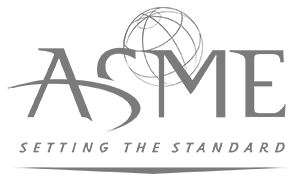What are Weld Maps and Weld Logs?
If you haven’t figured it out yet, at Holland Applied Technologies, we are in the sanitary component and custom systems market and cater exclusively to the high purity process industry. In the high purity process industry, specifically the biopharmaceutical industry, documentation requirements are a key distinguisher between people who play in the industry and those that live in it. One of the most critical processes our customers trust us with is welding of material to create the fluid transfer paths that carry their products. Weld inspection and logging has been and will always be a key part of any Quality Assurance program. But because of the requirements of the US Food and Drug Administration and guidelines outlined by the American Society of Mechanical Engineers Bioprocessing Equipment Standard (ASME BPE), the weld documentation our customers ask us to provide is even more extensive. This post will focus on proper weld documentation specifically weld logs and weld maps- what they are and what information they provide.
Let’s start with the weld map. Weld maps are isometric drawings of the assembly to be welded showing the location with each weld, each weld having its own unique identifying number. They also contain a bill of material with the part number of each component used in making the assembly. After each weld is completed, it is labeled with a weld number (usually pin stamped on the part) that corresponds to a number on the isometric drawing of the part. When the isometric drawing is reviewed during validation, a third party can use the weld map to quickly identify where on the process piping the weld was performed and then refer to the weld log to ascertain the data discussed above.
Weld logs contain the data specific to each individual weld. Normally a weld log sheet would contain all of the welding information for the welds on a specific isometric drawing. At the top of any weld log, you’ll usually find client specific project specific information, i.e. project number, job number, etc. You’ll also find the drawing number of for the isometric drawing that the log matches up with. You’ll also see a section for gas lot number of the Argonne gas used for the weld purge as well a block with the signature of the welder who is doing the work.
For our weld logs, the main body of the document has 9 columns for the weld to complete and 3 for the weld inspector. For each weld, the welding technician first enters the weld number, the date, what piece of welding equipment is being used and which weld procedure is being used. All of our welding personnel are qualified to specific ASME Section IX weld procedures. They then enter the heat number for each of the two components to be welded, the size of the tubes being welded and their own initials.
The rest of each line on the weld log is used by the weld inspector. Each weld is visually inspected by a qualified weld inspector using a boroscope to examine the weld ID. After inspection he completes the log for that individual weld as to whether it had been boroscoped, did it pass the visual boroscope examination, the inspectors’ signature and the date.

Typical Holland Weld Log
Once this process is completed, these documents, as well as the corresponding material test reports of the components used in the assembly, become part of the turn over package that ships with the system. Properly executed, you now have a comprehensive package identifying each weld, who made the weld, what components went into the weld and the corresponding material certs for each one of the components.
As we wrap this blog up, let’s not forget why all of this documentation is important. The systems we fabricate at Holland Applied Technologies are used by our customers to manufacture drug products we literally inject into our bodies. And before the drug ever gets made, the system used to make it needs to be validated. Governing bodies like the US Food and Drug administration use the data provided in these logs and maps to approve the manufacturer and manufacturing facility, protecting public health and giving consumers the peace of mind that the medicines they are taking are made on systems and in facilities that comply with current best practices. So if after reading this blog, you have any questions about high purity process welding or documentation requirements, contact a Holland Sales Engineer today.







